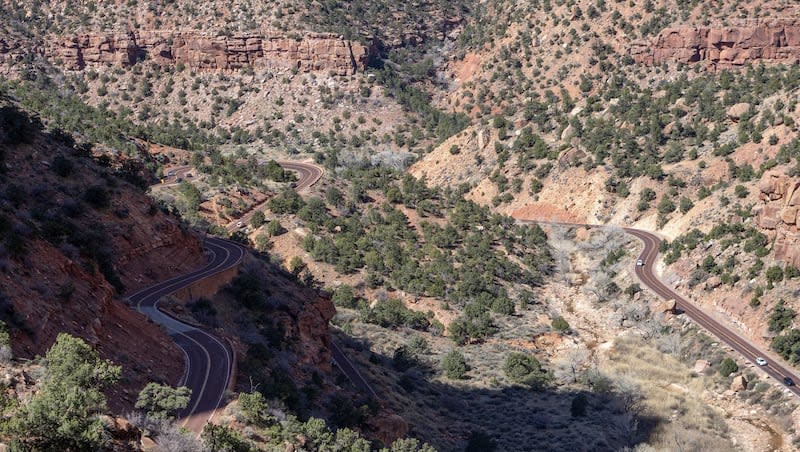Zion to implement big traffic changes on scenic highway beginning in 2026

Certain types of recreational vehicles, motorcoach buses and other large vehicles will soon be rerouted away from one of Utah’s more scenic routes, as Zion National Park officials seek to improve its safety.
Park officials on Thursday outlined future changes planned at Zion-Mount Carmel Highway. Beginning sometime in mid-2026, vehicles taller than 11 feet, 4 inches tall; 7 feet, 10 inches wide; 35 feet, 9 inches long; or 50,000 pounds in weight will not be allowed onto the highway that cuts across the park.
Vehicles that exceed any of those totals will still be allowed into the park and can be used on other existing park roads, but drivers will need to alternate routes surrounding the park to reach some destinations, park officials said. The change is expected to tack 10-40 minutes onto trips for vehicles that are rerouted.
Jeff Bradybaugh, superintendent of Zion National Park, says he believes the changes will reduce the probability of vehicle collisions, issues with overweight vehicles and vehicles crossing lanes just because they are too big to negotiate the highway's turns.
The changes were crafted after meetings with different transportation departments, residents, elected officials and others who have ties to the park.
"These changes reflect months of discussions to find the best way forward to manage the historic Zion-Mount Carmel Highway and increase driver safety," Bradybaugh said in a statement. "Our goal is to protect drivers, meet modern safety standards and ensure the integrity of the road and tunnels so that we continue to enjoy scenic drives on the historic Zion-Mount Carmel Highway."
The change won't impact most vehicles but may impact many RVs and motor coach buses — two common vehicles in national parks. Per Neighbor.com, most RVs are between 8 and 8½ feet wide; the average coach bus, according to Dimensions.com, is taller, wider and longer than the park's listed required limits.
The road was initially constructed between the late 1920s and early 1930s before being widened in 1960.
But park officials explained that larger vehicles like RVs and motor coach buses often end up crossing the centerline 18 times on the Zion-Mount Carmel Highway, especially in areas where the turning radius is difficult for large vehicles. There are already requirements at the famous Zion-Mount Carmel Tunnel, where vehicles taller than 11 feet, 4 inches or wider than 7 feet, 10 inches are required to have an escort to pass.
Some of the highway's bridges are only rated for 50,000-pound vehicles at most, which some of the larger vehicles exceed, according to park officials.
They add that the highway was designed to be "more compatible with the landscape," and expanding the road further isn't an option, either, which is why large vehicles will be rerouted off the road.
“When the road was designed, vehicles were smaller, moved at slower speeds and weighed far less. Expanding the historic road is not feasible because of the terrain,” officials wrote. “New construction could be prohibitively expensive and harm the park’s landscapes, plants and animals and impact the historic values of the road itself.”

